Get PeakVisor App
Sign In
Search by GPS coordinates
- Latitude
- ° ' ''
- Longitude
- ° ' ''
- Units of Length

Yes
Cancel
Share ×

Scan the QR code and open PeakVisor on your phone
❤ Wishlist ×
Choose
Delete
Relatively small in size, Aberdeen Country Park is one of the more family-friendly and easily accessible country parks in Hong Kong. There are 6 named peaks in the park, with Mount Gough (479 m/1,572ft) being the highest among them.
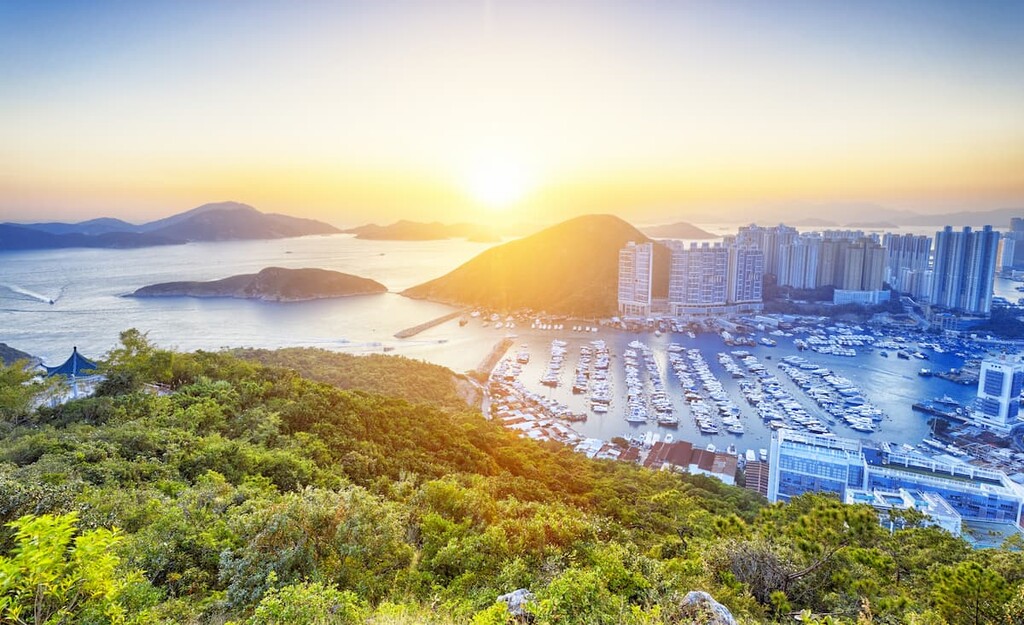
Designated in 1977, Aberdeen Country Park is a 423-hectare (1,045-acre) expanse of rolling hills, secondary forests and historic reservoirs on southern Hong Kong Island in China.
Neighboring parks and protected areas include Wan Chai Gap to the north, Wong Chuk Hang to the south, and Pok Fu Lam Country Park to the west. Its proximity to residential areas makes it popular with locals who take regular short walks in the park.
Even though three of the hills in the area are above 400 m (1,312 ft) in elevation, the peaks in the park have relatively low prominence of no more than 200 m (656 ft). The terrain is lowest in the middle of the park where the reservoirs are located. Aberdeen Upper Reservoir nestles in the center of the park, and Aberdeen Lower Reservoir lies on its south-west.
Most of the park is part of the Ap Lei Chau Formation, which is named after an island off the Aberdeen area on Hong Kong Island (not in the similarly named Aberdeenshire of Scotland).
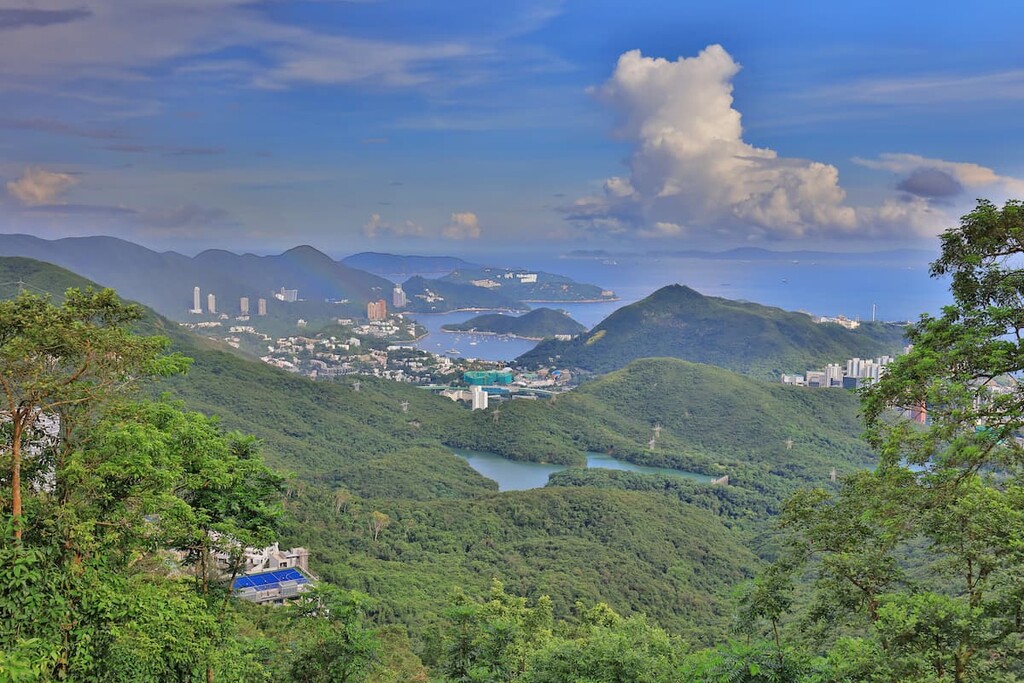
The formation is characterized by strata of crystal-bearing fine ash vitric tuff with eutaxite, a type of banded volcanic rock. The eutaxite is folded into a wavy pattern with anticlines and synclines, forming some pronounced topographic features.
The area around Mount Cameron and Middle Gap in the western side of the park displays strong eutaxitic banding in the form of sharp ridges.
Much of the forests in the park were cleared for fuelwood by the Japanese occupying forces during World War II. Extensive reforestation and nature’s resilience have managed to restore the barren landscape to a mantle of greenery.
The south-east corner of the park north of Nan Fung Road preserves the last stand of feng shui forests on Hong Kong Island (though they can be found elsewhere in the territory). In the old days, people were accustomed to build villages in front of native woodlands which served to shelter houses from strong winds, protect slopes from erosion and reputedly block evil spirits. The villagers grew fruit trees and other plants with economic/ medicinal value on the edge, making these “enhanced” forests exceptionally rich in biodiversity.
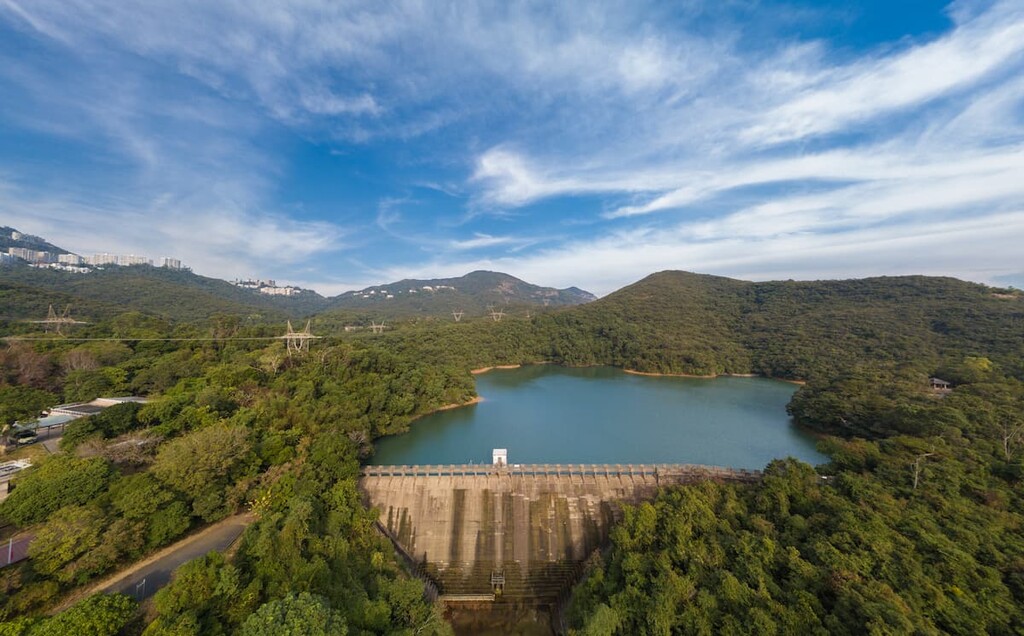
The park in general has a healthy woodland environment with a wide distribution of tree species such as schima (Schima superba), ivy tree (Schefflera heptaphylla), Brisbane Box (Lophostemon confertus) and Hong Kong gordonia (Polyspora axillaris).
The rhodoleia (Rhodoleia championii), a rare and protected tree species in Hong Kong, produces bright red flowers in spring. The flower is also known as Hong Kong rose though they are not related to true roses.
The dense vegetation shelters more than forty bird species including large-billed crow, common kingfisher, common myna and Chinese huamei. In particular, the park is a roosting hotspot for the majestic black kite, which has a wingspan of 1.5 m (4.9 ft) and tends to scavenge more than hunting live prey.
The growing herd of boar that forage in the park are well used to human presence and sometimes even wander off into the urban area. Other denizens like Chinese pangolins and exotic squirrels keep a much lower profile.
The Aberdeen Lower Reservoir was originally a private reservoir built by Tai Shing Paper Manufacturing Company in 1890. Under an agreement with the government, the company not only used the water for its operations but also supplied 60,000 gallons on a daily basis to residents on Ap Lei Chau, an island off Aberdeen.
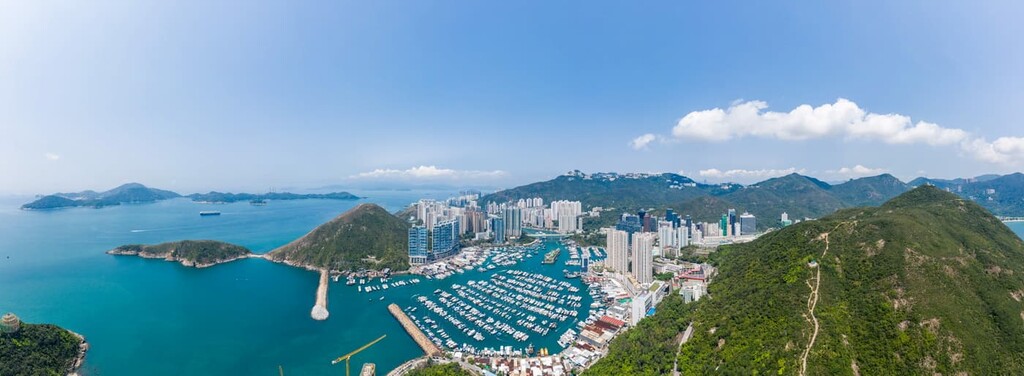
The government purchased the reservoir from the factory in the late 1920s and converted it to a public reservoir in order to meet the population’s growing demand for fresh water. In 1931, it completed the construction of the adjacent Aberdeen Upper Reservoir which was also the last reservoir being built on Hong Kong Island.
The reservoirs were built roughly in the Italianate Renaissance style. The valve house and bridge of the upper reservoir, as well as the dams of both reservoirs, have been listed as declared monuments.
Because of its easy access to different parts of Hong Kong Island, especially the strategic Wan Chai Gap and Wong Nai Chung Gap, the area inside the park was reinforced with military installations during World War II, including pillboxes, that are still standing today.
Because of the park’s small size and relatively gentle terrain, trails are generally short and easy except for unmarked routes. Here are some of the best hikes and attractions to check out in the park:
There are three trails that cross the park from Wan Chai Gap in the north to the reservoirs in the south.

Crossing the park from west to east, or vice versa, this 14-km (8.7-mi) route follows Sections 3 and 4 of the Hong Kong Trail. A part of Section 4 overlaps with Lady Clementi’s Ride, which runs between the north and south of the park.
Section 3 begins in the west at Peel’s Rise in Aberdeen and meanders through woods and streams with occasional views of the reservoirs until it reaches Wan Chai Gap in the north. An alternative starting point is Peel’s Rise at the Peak.
Section 4 follows Lady Clementi’s Ride to the upper reservoir, then the trail gets more open as it heads east uphill on the zigzagging Middle Gap Road till a viewing point, which makes a good stop with views of Deep Water Bay and Ocean Park. It continues on to Black’s Link to end at Wong Nai Chung Gap.

The area around the reservoirs has a host of family-friendly and accessible facilities, including a wheelchair-accessible picnic area and a trail that is wheelchair accessible.
There are several short thematic trails such as the Aberdeen Tree Walk with information on twenty species. The Aberdeen Tree Centre, which used to be the Aberdeen Country Park Management Centre, has a range of exhibits, models and interactive games about trees.
The Aberdeen Nature Trail around the lower reservoir is a favorite with families. Information plaques along the way provide cool facts on the natural environment, history and culture.
The Aberdeen Fitness Trail is a circular route with thirteen exercise stops with facilities like push-up stand, sit-up bench and inclined ladder. Other facilities nearby include barbeque pits, a kids’ walk and a Tai Chi terrace.

This conveniently-located park can be accessed from a few neighborhoods. Here’s what you need to know:
With a strong tradition as a fishing community, this neighborhood is famous for its fishing boats mooring in the typhoon shelter, the biggest wholesale fish market in Hong Kong, and the ornate Jumbo Kingdom floating restaurants (now closed). Its most well-known landmark, however, is probably Hong Kong’s local theme park, Ocean Park.
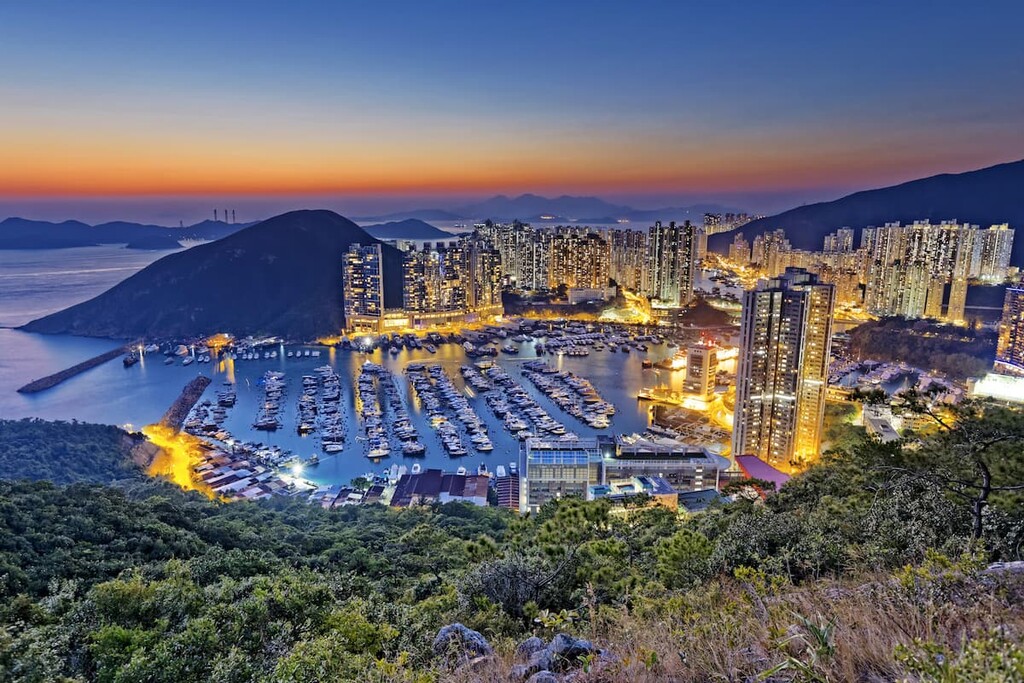
Bordering the northern end of the country park, Wan Chai Gap sits at the intersection of eight roads that lead to all parts of Hong Kong Island. Its strategic location made it a stronghold during World War II.
Today, this tranquil neighborhood just above the busy urban area is home to the Hong Kong Police Museum and Wan Chai Gap Park. It is within walking distance from the urban center in Wan Chai.
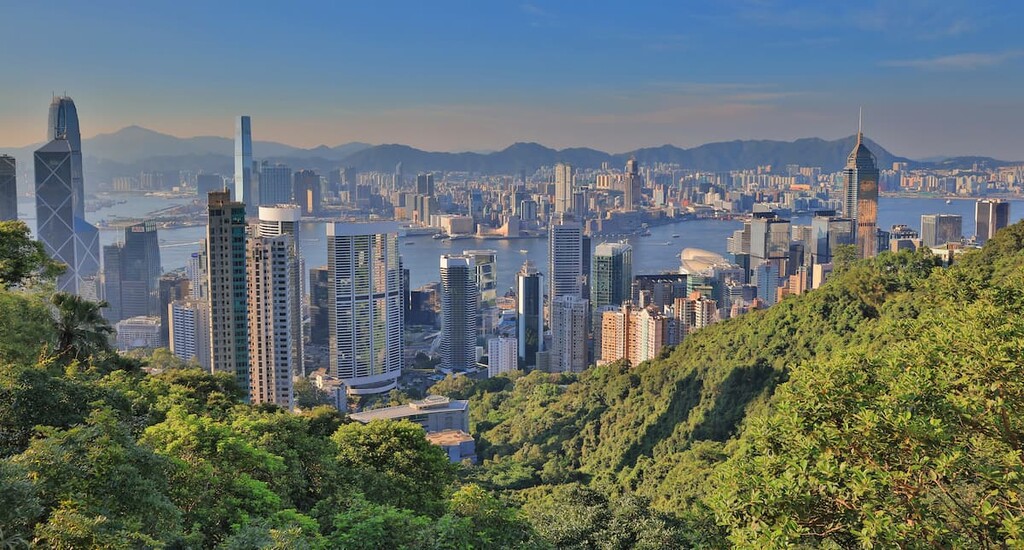
Situated to the east of the park, this is another strategically-important gap because of its central location on Hong Kong Island. It saw the heaviest casualties on a single day in the city during World War II.
Now a historic trail with battlefield remnants and information boards tell the story of the battle that resulted in the fall of Hong Kong. There is also a park with a recreational reservoir. To reach the Gap, take bus 6 or 66 from Central.
Explore Aberdeen Country Park with the PeakVisor 3D Map and identify its summits.








